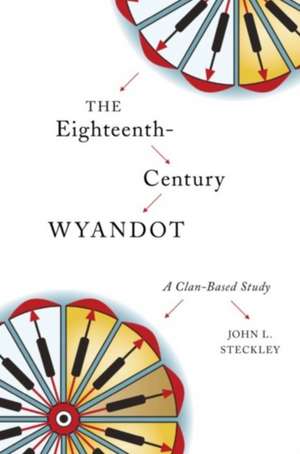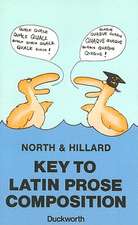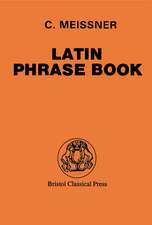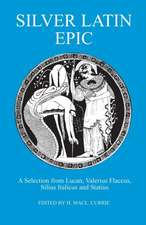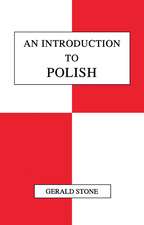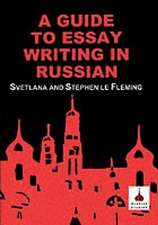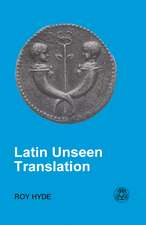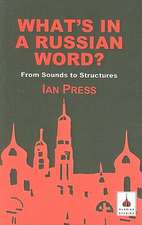Eighteenth-Century Wyandot: A Clan-Based Study: Indigenous Studies
Autor John L Steckleyen Limba Engleză Paperback – dec 2015
Preț: 297.63 lei
Nou
Puncte Express: 446
Preț estimativ în valută:
56.95€ • 59.62$ • 47.12£
56.95€ • 59.62$ • 47.12£
Carte tipărită la comandă
Livrare economică 07-21 aprilie
Preluare comenzi: 021 569.72.76
Specificații
ISBN-13: 9781771122009
ISBN-10: 1771122005
Pagini: 316
Dimensiuni: 155 x 230 x 18 mm
Greutate: 0.41 kg
Editura: Wilfrid Laurier University
Colecția Wilfrid Laurier University Press (CA)
Seria Indigenous Studies
ISBN-10: 1771122005
Pagini: 316
Dimensiuni: 155 x 230 x 18 mm
Greutate: 0.41 kg
Editura: Wilfrid Laurier University
Colecția Wilfrid Laurier University Press (CA)
Seria Indigenous Studies
Recenzii
John Steckleys detailed research on the Wyandot/Wendat clan system is the culmination of a lifetime pursuit to unearth and untangle the complicated history of North Americas Indigenous peoples. This book is a goldmine for all those interested in exploring the organic and evolutionary nature of First Nation communities and will contribute greatly to our understanding of Indigenous strategies of resistance and survival against colonial regimes. Kathryn Labelle, University of Saskatchewan, author of Dispersed but Not Destroyed: A History of the Seventeenth-Century Wendat People (2013)
Using documentaiton about clan structure, residences, and history, as well as individual stories, Steckley peers deeply into Wyandot/Wendat culture, especially their political systems, gender roles, relations with various Jesuits, and interactions with non-Wyandot/Wendat First Nation People throughout the Great Lakes, from the Iroguoian Confederacy in the east to the Fox Nation to the west. Steckleys book is most significant in two areas for which he is particularly well-known and professional esteemed. The first is his singular understanding and interpretation of the Wyandot/Wendat language.... Steckleys easy to understand orthography of the Wyandot/Wendat language literally keeps the language alive. Secondly, Steckleys use of individual case studies, both male and female, keeps the memory of individuals alive, people who otherwise would have been lost to history. In other words, Steckleys book is extraordinarily dynamic on many accounts. It is not surprising therefore that Steckley, who has devoted his lifes work to understanding and unravelling the cultures and kinship of Great Lakes native cultures, was adopted by the Wyandot people of Kansasa compliment of brotherhood that is unquestionably the greatest accolade of his professional life; more importantly, Steckley, as a human being, is helping to counter the terrible effects of cultural genocide and ethnocide that occurred throughout the Great Lakes, and all of the Americas, during the eighteenth and nineteenth centuries. The Eighteenth-Century Wyandot makes major contributions to the academic fields of Great Lakes and Native American history, anthropology (and archaeology), sociology, and anthropological linguistics. Indeed, Steckleys book is the best kinship/clan based historical study I have ever read. Kenneth C. Carstens, Institute of Frontier History and Archaeology, Kentucky, The Michigan Historical Review
Steckleys central thesis is that clans kept the Wyandot strong, enabling them to survive forced migration and the splitting up of ancestral villages and tribes. Steckley demonstrates that the Wyandot clan structure was dynamic in nature, despite its static depiction in classic anthropological literature. The authors uniquely personalized writing style makes this work accessible to interested readers outside of academia.... This work makes an invaluable contribution to a better understanding of Wyandot history. Summing up: Highly recommended. B.F.R. Edwards, First Nations University of Canada, CHOICE
Using documentaiton about clan structure, residences, and history, as well as individual stories, Steckley peers deeply into Wyandot/Wendat culture, especially their political systems, gender roles, relations with various Jesuits, and interactions with non-Wyandot/Wendat First Nation People throughout the Great Lakes, from the Iroguoian Confederacy in the east to the Fox Nation to the west. Steckleys book is most significant in two areas for which he is particularly well-known and professional esteemed. The first is his singular understanding and interpretation of the Wyandot/Wendat language.... Steckleys easy to understand orthography of the Wyandot/Wendat language literally keeps the language alive. Secondly, Steckleys use of individual case studies, both male and female, keeps the memory of individuals alive, people who otherwise would have been lost to history. In other words, Steckleys book is extraordinarily dynamic on many accounts. It is not surprising therefore that Steckley, who has devoted his lifes work to understanding and unravelling the cultures and kinship of Great Lakes native cultures, was adopted by the Wyandot people of Kansasa compliment of brotherhood that is unquestionably the greatest accolade of his professional life; more importantly, Steckley, as a human being, is helping to counter the terrible effects of cultural genocide and ethnocide that occurred throughout the Great Lakes, and all of the Americas, during the eighteenth and nineteenth centuries. The Eighteenth-Century Wyandot makes major contributions to the academic fields of Great Lakes and Native American history, anthropology (and archaeology), sociology, and anthropological linguistics. Indeed, Steckleys book is the best kinship/clan based historical study I have ever read. Kenneth C. Carstens, Institute of Frontier History and Archaeology, Kentucky, The Michigan Historical Review
Steckleys central thesis is that clans kept the Wyandot strong, enabling them to survive forced migration and the splitting up of ancestral villages and tribes. Steckley demonstrates that the Wyandot clan structure was dynamic in nature, despite its static depiction in classic anthropological literature. The authors uniquely personalized writing style makes this work accessible to interested readers outside of academia.... This work makes an invaluable contribution to a better understanding of Wyandot history. Summing up: Highly recommended. B.F.R. Edwards, First Nations University of Canada, CHOICE
Cuprins
Preface; Introduction; Two Questions; Five Wyandot Strategists of the Late Seventeenth Century: Sastaretsi, Kandiaronk, Sk8tache, the Baron & Quarante Sols; Other Nations & the Clans of the Wyandot: Missionaries & Other Strangers Enter Their Midst; Wyandot Participation in Christian Rituals; Wyandot Leadership: Male Political Roles; The Political Roles of Wyandot Women; Eight: A Summary; Index.
